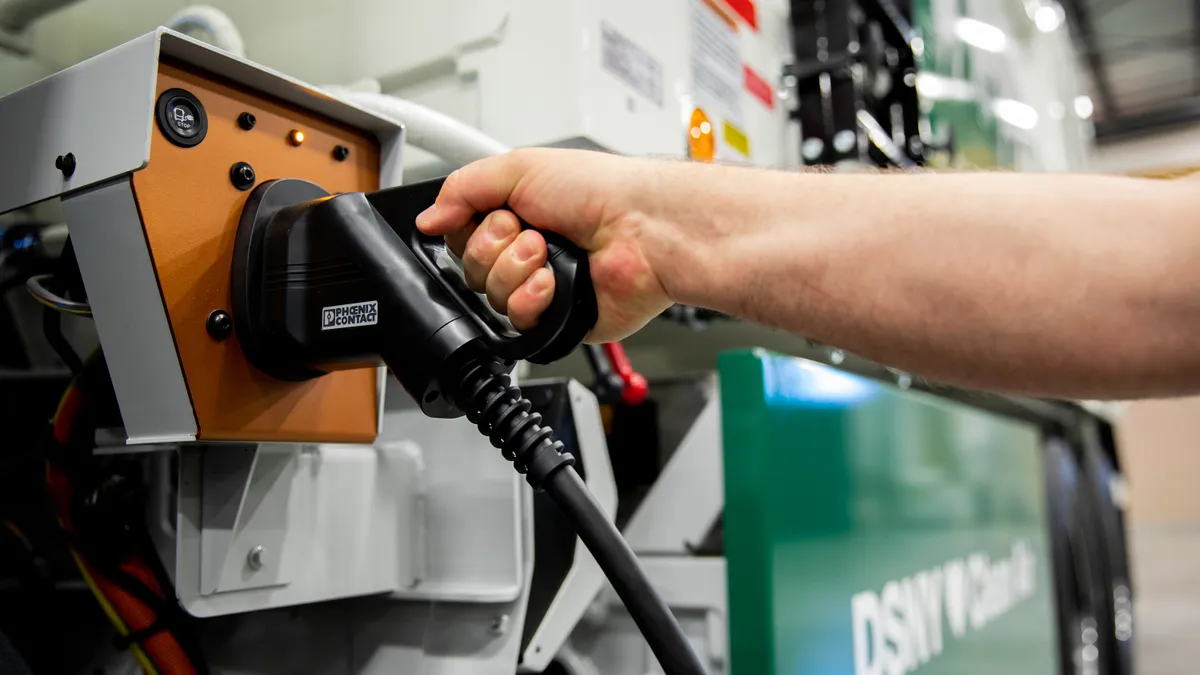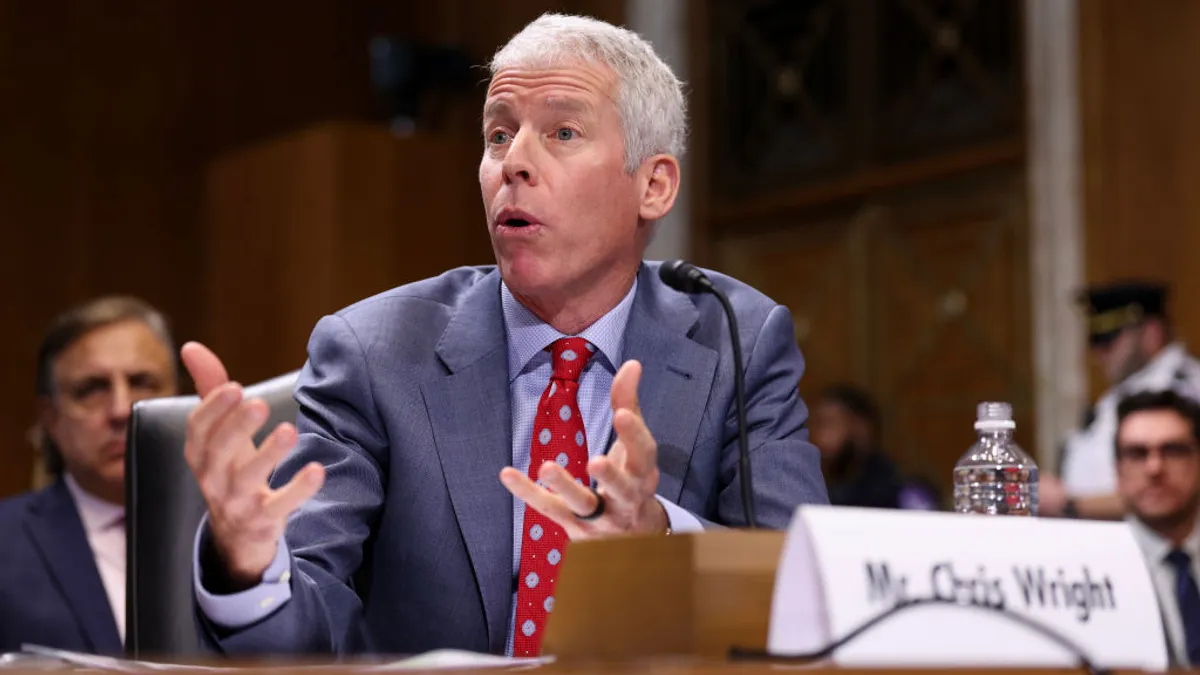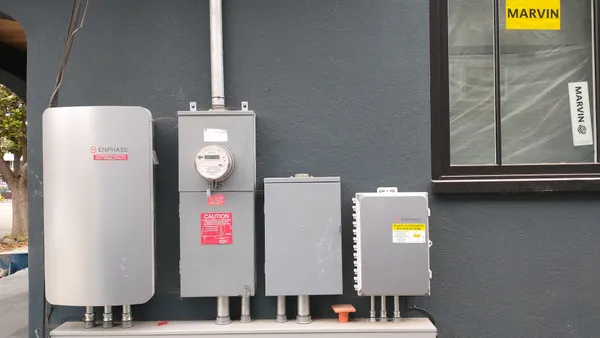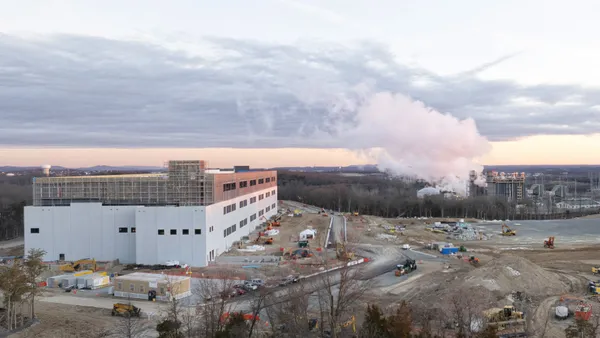Dive Brief:
- The California Air Resources Board (CARB) unanimously passed its Advanced Clean Trucks (ACT) Regulation, following a public hearing Thursday. "By 2045, every new truck sold in California will be zero-emission," CARB said in a news release
- The rule requires truck OEMs to sell an increasing percentage of zero-emission trucks in California between 2024 and 2035. It also includes a one-time reporting requirement for large employers — including retailers, OEMs, brokers and trucking firms — regarding their facilities, types of truck services and fleet. The rule applies to medium- and heavy-duty vehicles from Class 2b to Class 8.
- CARB said it will consider two additional sustainability-related actions for trucking in the coming months. "The first sets a stringent new limit on NOx (oxides of nitrogen), a major precursor of smog. This will require that new trucks that use fossil fuels include the most effective exhaust control technology during the transition to electric trucks. There is also a proposed requirement for larger fleets in the state to transition to electric trucks year over year," CARB said.
Dive Insight:
This move to phase out diesel trucks is a "first-in-the-world rule," according to CARB. It's part of a larger push by the board to meet state environmental goals, which include reaching federal ambient air quality standards, a 40% reduction in greenhouse gases (GHG) by 2030, an 80% reduction in GHG by 2050 and a 50% reduction in petroleum use by 2030.
"This new rule ... puts California on the path for an all zero-emission short-haul drayage fleet in ports and railyards by 2035, and zero-emission 'last-mile' delivery trucks and vans by 2040," CARB said.
Specifically, the ACT rule would require manufacturers to produce 9% of Class 8 straight trucks to be zero-emission and 5% of Class 8 tractors to be zero-emission in 2024, according to Karen Caesar, CARB public information officer. By 2035, 55% of Class 2b – 3 truck sales, 75% of class 4 – 8 straight truck sales, and 40% of truck tractor sales must be of zero-emission vehicles (ZEV).
ACT's reporting requirement says any privately owned fleet with 50 or more vehicles (weighing at least 8,501 lbs) with a facility in California must report. Businesses with gross annual revenues of $50 million or greater that operate at least one California facility must comply, according to the rule proposal. Brokers with California facilities that dispatch more than 50 vehicles and public agencies would also need to report. According to CARB, this information would help ensure fleets purchase available ZEVs and "place them in service where suitable to meet their needs."
"The point of regulation is not to simply require things that are going to happen any way," said Tesla Senior Policy Advisor Andrew Schwartz in support of the rule during the public comment period. "It is to push the market to move more quickly, given the criticality of transitioning away from fossil fuels as fast and as effectively as we can." He said the company's semi truck had already received orders from fleets hauling in multiple major industries.
California is taking perhaps the most aggressive stance against carbon emissions with its standards for fleets, and OEMs and large fleets seem to be embracing the challenges. A number of OEMs and fleets displayed battery-electric and hydrogen-electric tractors and delivery trucks, and spoke of plans to ease them into service at the 2019 Advanced Clean Transportation Expo in Long Beach, California.
Cost-savings of electric vehicles (EV) are beginning to appear for fleets. In the past, the battery for a battery-electric vehicle (BEV) was the main cost. But Ceres and the California Trucking Association, in a May 5 study, found battery cost "has declined as much as 80% over the last eight years. Further cost declines of over 50% are expected in the next decade, which should put upfront costs of many EVs below their conventional competitors by 2030."
A Samsara survey found 85% of electric truck owners said traditional vehicles cost more than electric trucks to maintain. And 53% of managers said they will use savings to increase driver wages.














